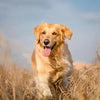Calico Cat: Breed Profile, Characteristics & Care🐱
Appearance, Personality, History, Care, & Helpful Information for Pet Owners
There is no particular breed of cat that is calico. In reality, they belong to domestic cat breeds with distinctive calico (tri-color) coats. One calico might have the typical pattern of bright orange, black, and white, while another might have a softer blue-and-cream color scheme. The latter is referred as in feline genetics as a "dilute calico."
Two calico cats will never look precisely the same. They are renowned for their wit and spunk, but they are also devoted and caring friends to individuals of all ages. Their personalities are equally intriguing. It's interesting to note that nearly all of the exceedingly rare male calicoes—one out of every 3,000—are infertile, meaning they are unable to procreate. It contributes to their reputation as fortunate people.
Find out more about the unique qualities of calico cats.
Personality: Sassy, spunky, bold, affectionate, independent, loyal
Weight: Up to 12 pounds
Length: About 18 inches
Coat Length: Short hair and long hair
Coat Colors: Orange, black, blue, lilac, and cream
Coat Patterns: Tri-color (calico)
Eye Color: Yellow, green, or blue
Lifespan: 15 years, depending on breed
Hypoallergenic: No
Origin: Possibly Egypt and the Mediterranean coast
Calico Cat Characteristics
The calico is a medium-sized domestic cat renowned for their spunky, assertive personality. While this is a generally independent cat who doesn't require constant attention, the calico is also sweet, loving, and loyal.
They will readily bond with a single person but enjoy the company of an entire family, too. However, a study on cat coat colors and behavior found that calicos tend to be more aggressive.
Calicoes differ from tortoiseshell cats, whose colors (red and black) are interwoven throughout the coat instead of appearing in distinct patches of solid color.
History of the Calico Cat
No one is sure where the calico originated, though the cats likely emerged from Egypt and were traded along the Mediterranean.
Calico cats are believed to bring good luck in the folklore of many cultures. In Japan, Maneki Neko are good luck figures—the waving cat—that sometimes depict calico cats. In the United States, these are sometimes referred to as "money cats."
Researchers began seriously studying calico cats and their appearance in the late 1940s. Murray Barr and his graduate student E.G. Bertram noticed masses inside the nuclei of nerve cells of female cats. They were absent in male cats. These dark masses eventually were called Barr bodies and determined to be inactive X chromosomes. Mary Lyon proposed the concept of X-inactivation in 1961. It occurs when one of the two X chromosomes inside a female mammal shuts off. She observed this in the coat color patterns in mice, similar to the patterns of calico cats.
In calico cats, the fur-color gene occupies the X chromosome. If that chromosome deactivates, a different fur color will appear. The inactive chromosomes are random, which is why each calico cat has a unique pattern.
Calico Cat Care
A calico cat's breed will determine a lot of its maintenance requirements. For example, the coats of shorthaired calicoes will require less brushing than the coats of longhaired varieties.
All cats, regardless of breed, require stimulation and activity. It is imperative that you ensure your cat has regular veterinary care and has all of its vaccinations up to date. Remember the importance of giving your cat regular tooth brushing.
Common Health Problems
The lifespan of a calico cat can be influenced by their breed. Male calico cats tend to have more health issues than female calicoes.
Regardless of the breed, a male calico cat is prone to a genetic health condition called Klinefelter Syndrome. In addition to being sterile, these cats experience cognitive and developmental issues, behavioral problems, reduced bone mineral content, and obesity.
Female calico cats do not have health problems that correlate with their color patterns, but they may have issues specific to their respective breeds. That's why it's important to schedule regular visits with your vet.
Appearance
Calico cats are some of the most strikingly patterned cats, wearing bold patches of colors—mostly orange, black, and white.
According to the Cat Fanciers' Association (CFA) show standards for calico Persians, the cat should be a tri-color cat of black, red, and white with white feet, legs, belly, chest, and muzzle. The cat should also have a colored tail and one or more colored patches on the head and body.
Calicoes' eye colors include copper, blue, green, or odd-eyed. In show-quality Persians, odd-eyed bi-colors should have one blue and one copper eye with equal color depth.
Diet and Nutrition
A complete and balanced cat food, whether dried or canned, is generally a great option for calicoes of any breed. However, research your specific breed of cat to find out if they have any unique dietary requirements. Ask your veterinarian for feeding advice, too.
Where to Adopt or Buy a Calico Cat
Calicoes are generally not breed specific. You may find one at your local shelter or pet rescue for under $100. Calico-patterned breeds are more expensive.
Calico cats are not rare, but finding one at a local shelter can be difficult. Check with breeders of cats who tend to have calico coloration in your area to see if any specialize in calico patterns, or search online adoption sites to locate a kitten or cat in your area.
- Posted in:
- Cat
- cat grass
- cat toy
- cat toys for indoor cat
- cat's birthday
- catlovers
- cats
- celebrate
- emotion
- funny
- love
- pet
- relationship




